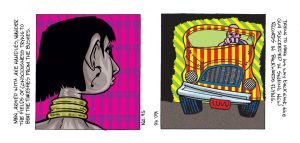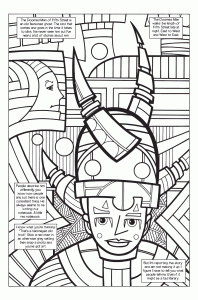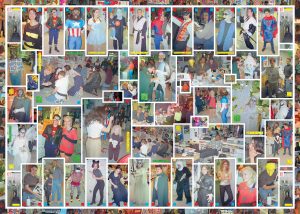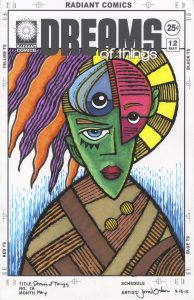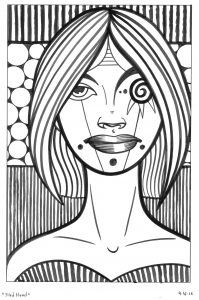I drive a 2009 Honda Civic. It’s hard to believe but ten years have almost passed since I bought it in the fall of 2009. It’s been a good and reliable car for me and only has about 35,000 miles on it. It’s been throwing me some curves recently though. I had a big $1400 repair bill for it last fall to get it to pass inspection. Stuff wears out in nine years. But at least it’s never broken down on me. I did hit a dear with it back in December of 2012 and though it needed repairs it still ran after the collision.
Last Thursday I was driving to my local comic shop. It was my usual Thursday night run except I was startled by a light showing on my dashboard. I had never seen it on before and had no idea what it was but the initials TPMS were lit up. That made me nervous. I kept driving and met my friend Rob at the comic shop and I told him and John (who works there) about the light. They both knew what it was and were surprised that I hadn’t run into it before.
It turns out that TPMS stands for Tire Pressure Monitor Sensor. I knew I had a tire pressure light in my car. It had gone off before to tell me that my tire pressure was low. The first time that one went off I had no idea what it was. But I didn’t know that a light goes off when the car can no longer sense the tire pressure because the monitor wasn’t working. That was new to me. But I was assured that it didn’t really matter to the car’s functioning. I’d just have to keep track of my tires’ pressure the old fashioned way. By checking them myself.
Now we can cut to the next day. On that Friday I drove another friend to the Newark Airport. The drive was uneventful and then I got home and parked the car in my garage. I didn’t go anywhere on Saturday so the car sat there until Sunday when I decided to go to the store. As I pulled the car out of the garage something didn’t sound or feel right. I got out and saw a flat tire on the front drivers side.
I didn’t own a car all through my twenties and most of my thirties and so have never had a flat tire before. I wasn’t really sure what I was supposed to do. I pulled it back into the garage and borrowed my sister’s car to go to the store. As I was out I remembered watching my brother-in-law fix a hole in a tire last summer. When I got back I looked up how to plug a leaking tire on the internet and watched a video. The guy pulled a screw out of a tire and used a tire plug kit to fix the leak. It took five minutes.
I decided to pull my car out of the garage and see if I could find what made my tire go flat. To move the car I had to put air in my tire first and used my bicycle pump to get it back to about 30 psi. That took 250 pumps by the way. Pretty fatiguing. Sure enough my tire also had a screw sticking out of it. This inspired me to try and fix my own tire. So with my sister’s car I went to the local auto parts store to get a tire repair kit. It was ten bucks plus tax and came with two tools, a pressure gauge, and about six plugs.
The first tool is like a big needle the the sticky plug goes through like a giant piece of thread. The second tool is a round file to scrape and clean the sides of the hole. So just like in the video I got a wrench to pull the screw out, put the file tool in the whole to smooth it, stuffed the needle tool and plug into the hole, worked the plug all the way in (it took considerable force), an pulled sharply on the needle tool which came out and left the plug behind in the hole. It was remarkably easy and stopped the leak.
After that I went back to the internet to see what to do next. Was the tire really fixed? Did more need to be done with it? Would it need to be replaced? I found no consensus. Some people said plugs can outlast the tire itself. Some said the plug could fail in a day, a week, or a year. One guy who owned a tire shop said he’d never drive on a plugged tire. But he also said owns a tire shop and sees all sort of bad tire problems. If the plug held you didn’t go see him. My father said that I probably needed to replace the tire.
After a fitful night’s sleep (because I really can’t afford more car bills. I haven’t paid off last fall’s $1400 bill) I decided to head over to the local tire place. I checked with guy there if I should patch it from the inside or get a new tire and he asked, “Is the plug holding?” I said that so far it was. He said “If it ain’t broke don’t fix it.” He also told me to monitor the pressure and bring it back for him to fix if it loses pressure in the next few days. A solid plan.
I’m still not out of the woods yet. I’ll keep my eye on the tire pressure using that new gauge I got with the kit. By the way I put the kit in my car’s trunk just in case. I even put my spare bicycle tire in there too. So if I’m out on the road and get a flat I can put a plug in and pump up the tire. Now if only there was some way for my car to keep track of my tire pressure.
